Healthiest baby food pouches
The Best Baby Food Pouches: 2022 Guide
By Anjali Shah on · Last Updated on
This post may contain affiliate links. As an Amazon Associate, I earn from qualifying purchases. Please read my disclosure.
This is your guide to the healthiest and best baby food pouches on the market today! Learn what to avoid, what to buy, and what to look for on the label!
When your little one transitions to solids, a common question is: should I buy pre-made baby food pouches or make baby food at home? While it doesn’t necessarily have to be an either-or, many of you know that I’m a huge fan of homemade baby food because it’s so easy and you can control all of the ingredients your little one is getting. I shared all of the recipes I used for Layla and Ayan in my baby food cookbook and put many on my blog here!
But there are those times when you’re on the go, or pressed for time, and you don’t have any homemade baby food on hand. Which is when baby food pouches can be a quick and convenient meal for your little one! But there are SO many baby food pouches out there, and not all of them are healthy. Many are filled with processed ingredients and added sugars. This can set your baby up to only appreciate sweet foods and reject vegetables as they get older. So what should you buy? And what should you avoid?
This is your guide to the best baby food pouches available today!
Can Some Baby Food Pouches Really Be That Unhealthy?
The food industry knows that babies shouldn’t be having added sugars when they first start solids, right?
Wrong.
As you have probably heard when it comes to buying pre-packaged food, what’s on the front is often misleading. This is also true when it comes to baby food pouches. The front may say spinach and kale, but when you turn it over you’ll find less expensive fillers such as fruit purees, or even fruit juices like apple juice concentrate.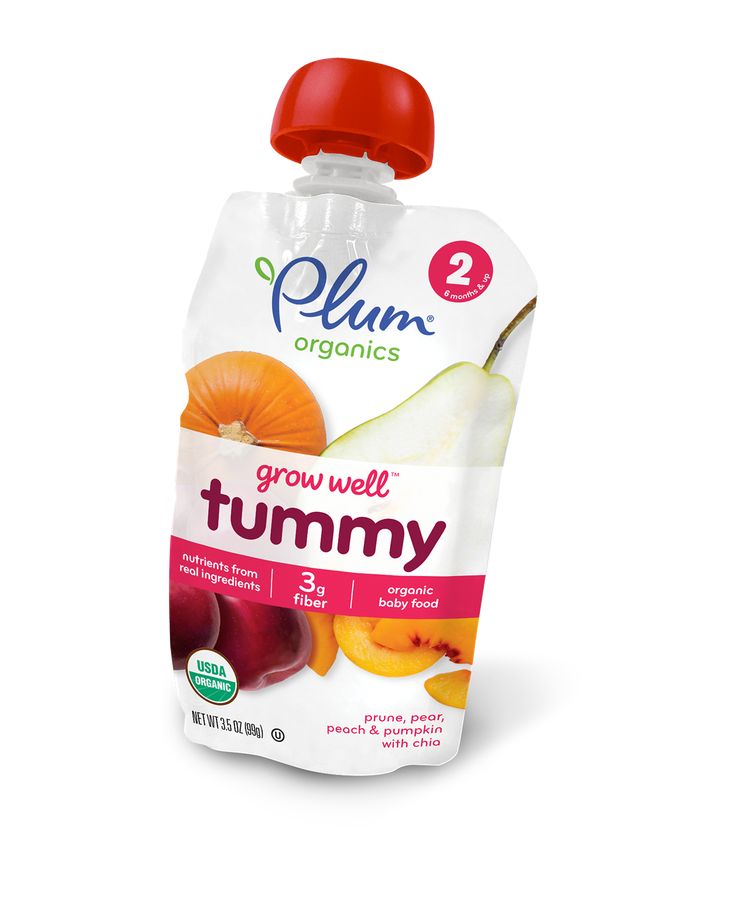 Sometimes in a “spinach” pouch the first 3 ingredients are fruits! That’s because, while there may be spinach, the manufacturer is not required to list the percentage of ingredients on the label.
Sometimes in a “spinach” pouch the first 3 ingredients are fruits! That’s because, while there may be spinach, the manufacturer is not required to list the percentage of ingredients on the label.
This basically means that your baby is only getting a sweet taste when eating that pouch and isn’t getting exposed to the actual taste of a vegetable. And in those early months of developing tastebuds, getting exposure to all kinds of flavors and tastes is essential to having a baby who doesn’t become a picky eater (who rejects veggies) later on!
Why Is It So Confusing To Find The Best Baby Food Pouches For Your Child?
Ingredient labels are confusing, packaging is misleading. I remember when I first gave Layla a baby food pouch and she devoured it. It was a pouch that said “organic super greens” on it. And I remember thinking: “Yeah! She loves greens!” When I turned it over, the ingredients were: bananas, pear, apple, spinach. What??
It has always really bothered me that most baby food pouches (even the ones promoting veggies) contain fruit. Like why add bananas or pears to a carrot & sweet potato pouch? Carrots and sweet potatoes are already naturally sweet – there is no need for fruit purees to make it even sweeter! Since breast milk is naturally sweet, it’s so important that babies learn the other tastes: bitter, sour, pungent, etc. when they start solids. All the fruit purees are essentially taking over your baby’s taste buds, making them think that if food isn’t sweet it’s not worth eating.
Like why add bananas or pears to a carrot & sweet potato pouch? Carrots and sweet potatoes are already naturally sweet – there is no need for fruit purees to make it even sweeter! Since breast milk is naturally sweet, it’s so important that babies learn the other tastes: bitter, sour, pungent, etc. when they start solids. All the fruit purees are essentially taking over your baby’s taste buds, making them think that if food isn’t sweet it’s not worth eating.
On top of that, many pouches that are fruit-forward and look healthy actually have a ton of unnecessary processed ingredients added. Take a look at Gerber’s Fruit & Yogurt Strawberry Banana Pouch.
Sugar, Carrot Juice Concentrate, Natural Flavor, Gelatin, Two different types of coloring…
These are all major red-flag ingredients in baby food. What in the world is gelatin doing in a pouch that looks vegetarian-friendly? And for a pouch that is supposed to have apples and strawberries (both of which are rich in fiber), there is less than 1g fiber in the entire pouch because of all of the fillers added. AND this pouch has 14g sugar. That’s as much as 1.5 Fun Sized Milky Way bars, or 1/3 of a can of Coke.
AND this pouch has 14g sugar. That’s as much as 1.5 Fun Sized Milky Way bars, or 1/3 of a can of Coke.
That’s why reading labels is so important to finding healthy, packaged baby food! So how do you find those pouches? Skip to the end of this post for my list of the healthiest baby food pouches! But first…
Top 5 Tips To Find The Best Baby Food Pouches
- Look at the sugar content: Stick to pouches with less than 8g of sugar, but ideally you’ll want to find pouches between 4-6g of sugar. For example, if you look at the front of Ella’s Organic Apples, Green Beans, Raisins pouch, you might think, “green beans are in here, this is great!” But the pouch actually has 13g of sugar from the apples and raisins, while the green beans are a very small addition. 13g sugar is equal to a fun sized milky way bar.
- Look to see if the ingredient listed on the front of the package is the first ingredient listed on the back. If you’re buying “spinach and apples,” it’s likely that apples are the dominant flavor.
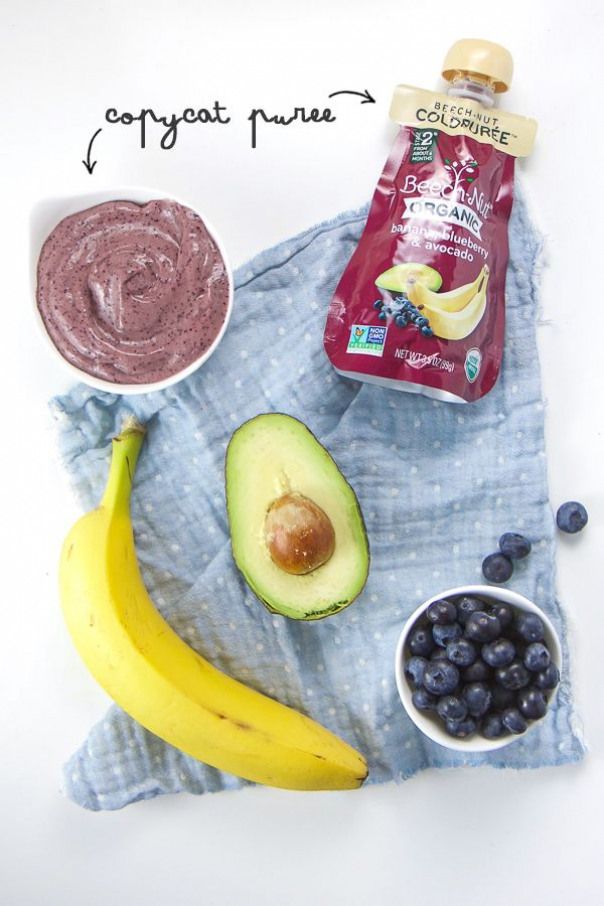 Some companies are more transparent than others on the percentage or amount of each ingredient in the pouch.
Some companies are more transparent than others on the percentage or amount of each ingredient in the pouch. - Stick to pouches that ONLY have vegetables. These are harder to find, but they do exist. And they actually taste like vegetables! If you do buy one with veggies & fruits, make sure there is <8g sugar, that vegetables are first, and fruits are last on the ingredients list. Beware of labels that make it seem like the pouch only has veggies: there are some deceptive pouches such as Veggie Blends, and Plum Organics Mighty Veggie pouches. These veggie blends also contain fruit, and often has as much or sometimes more sugar than those labeled as fruit blends.
- Fiber matters. A good sign that a pouch is either mostly water or fillers is when the fiber content is 1g or less. Aim for pouches with 2g fiber or more.
- Avoid ingredients likely to be contaminated with heavy metals. Pouches that have apples, pears, carrots, sweet potatoes, and rice are particularly at risk.
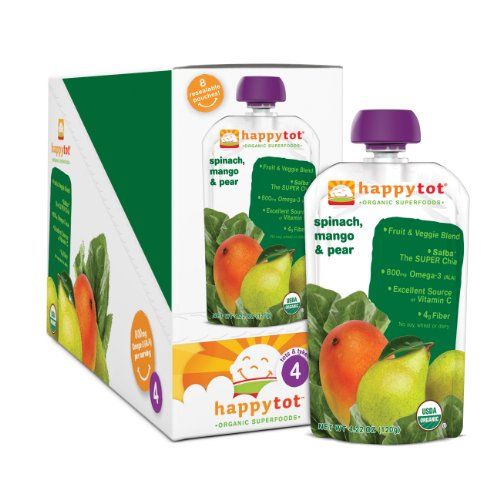 (For more details: A study done by the Clean Label Project in 2017 found that 65% of baby food products had detectable levels of arsenic, 36% detectable levels of lead, and 58% contained detectable levels of cadmium. A more recent study done by Consumer Reports in August of 2018 found that out of 50 nationally distributed baby food products, every single one of them had trace amounts of at least one of the heave metals which included arsenic, lead, or cadmium. Two-thirds of those tested had worrisome amounts of heavy metals, and 15 of the foods could pose potential health risk. The pouches that included rice and/or sweet potato were more likely to have higher amounts of heavy metal, and organic foods were just as likely to contain heavy metals as their non-organic counterparts.)
(For more details: A study done by the Clean Label Project in 2017 found that 65% of baby food products had detectable levels of arsenic, 36% detectable levels of lead, and 58% contained detectable levels of cadmium. A more recent study done by Consumer Reports in August of 2018 found that out of 50 nationally distributed baby food products, every single one of them had trace amounts of at least one of the heave metals which included arsenic, lead, or cadmium. Two-thirds of those tested had worrisome amounts of heavy metals, and 15 of the foods could pose potential health risk. The pouches that included rice and/or sweet potato were more likely to have higher amounts of heavy metal, and organic foods were just as likely to contain heavy metals as their non-organic counterparts.)
There are pouches out there that are organic, vegetable-forward, and don’t have any added sugars or fruit juices in them.
So here it is: the healthiest baby food pouches on the market today, the brands I love, and which pouches to buy.
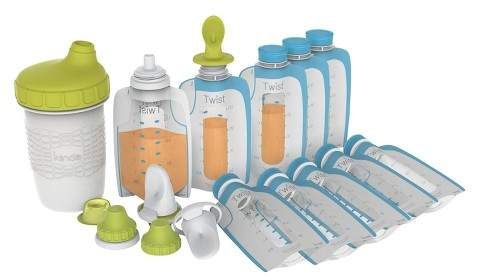
A special shout out to Alison Corey from Keeping the Peas who helped me with some of the research for this post! If a pouch is not listed on this list, it’s likely either high in heavy metals (per the Consumer Reports and Clean Label Project studies) or too high in sugar/fruits/processed ingredients, and should be avoided. But if you have a question about a particular pouch, don’t hesitate to ask in the comments of this post!
What Makes These the Best Baby Food Pouches?
- They contain between 0-8g of natural sugar; and 0g added sugar
- They have 2g fiber or more
- They are all organic
- They don’t carry a risk of heavy metals
The Best Baby Food Pouches (Organized by Brand)
Holle Organic Baby Food: Holle’s baby food is made in Europe and is certified both Organic and Biodynamic, which means that their farming practices go above and beyond just regular organic standards. All of their baby food is unsweetened, I love these flavors from this brand:
- Veggie Bunny: Carrots, Sweet Potatoes, and Peas
- Power Parrot: Pear, Apple, Spinach
- Zebra Beat: Apple, Banana, Beetroot
Cerebelly Organic Custom Pouches: All of Cerebelly’s pouches are super healthy and made with 100% organic ingredients.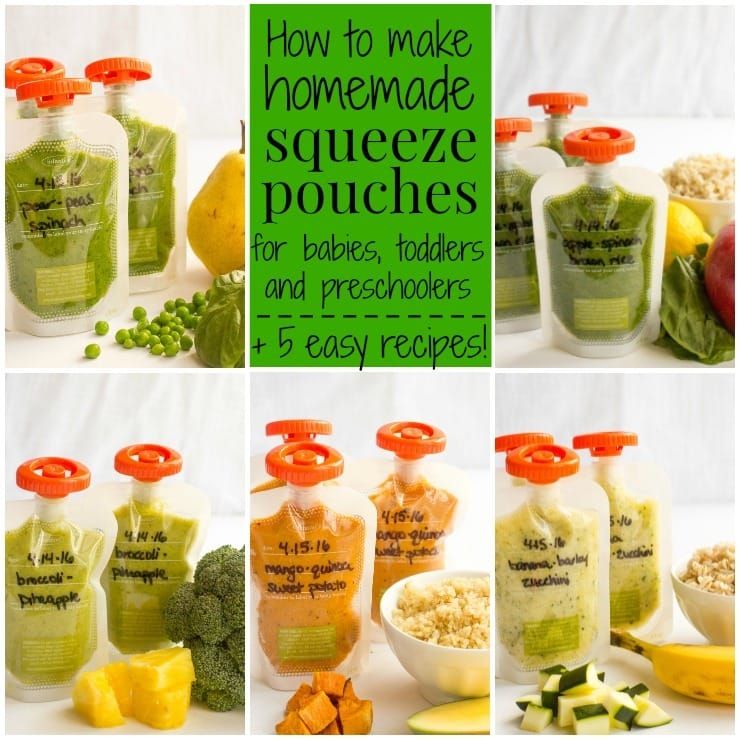 All of their pouches were developed by their founder – a neuroscientist and mom who is dedicated to creating the highest quality baby food possible. The way it works is super simple: you fill out a quick survey that tells Cerebelly your child’s age and what they’re up to. Cerebelly recommends a personalized pack of organic purees with the right blend of nutrients, and it gets shipped right to your door! The best part – they offer 20% off your first order + free shipping with the code: FIRSTORDER20!
All of their pouches were developed by their founder – a neuroscientist and mom who is dedicated to creating the highest quality baby food possible. The way it works is super simple: you fill out a quick survey that tells Cerebelly your child’s age and what they’re up to. Cerebelly recommends a personalized pack of organic purees with the right blend of nutrients, and it gets shipped right to your door! The best part – they offer 20% off your first order + free shipping with the code: FIRSTORDER20!
Yumi Organic Baby and Toddler Food. Yumi prides itself on creating custom blends for your baby that are 100% organic, made with real food, customized based on your baby’s stage of eating (from Stage 1 purees all the way to snacks and mini meals!). Their food comes in little jars – not pouches – as it’s made fresh and delivered weekly, straight to your door. You can also be confident that Yumi’s food contains no heavy metals, as they partner with trusted farms that are USDA Certified Organic, Non-GMO Project Verified and follow rigorous food safety testing. They look at federal data on soil contamination to find the best farms. Lastly, you get to choose from their range of 60+ unique organic meals you won’t find anywhere else, handpicked by nutritionists to support every milestone! Yumi is also offering 50% off your first order with the code: PICKY50!
They look at federal data on soil contamination to find the best farms. Lastly, you get to choose from their range of 60+ unique organic meals you won’t find anywhere else, handpicked by nutritionists to support every milestone! Yumi is also offering 50% off your first order with the code: PICKY50!
Serenity Kids
I love Serenity Kids because ALL of their pouches are under 5 grams of sugar! They’re 100% organic, made with super clean ingredients, has no added preservatives or sugars, and were created by a husband and wife team trying to find a better option for baby food for their daughter. Here are all of hte pouches I love – use the code PICKY to get 15% off your first order!
- SK – Kabocha Squash, Butternut, Pumpkin, 2g Sugar
- SK – Butternut Squash + Spinach, 2g Sugar
- SK – Carrot, Spinach and Basil, 3g Sugar
- SK – Chicken, Beef, Pork or Wild Salmon (choose your variety here), 2-3g Sugar
- SK – Carrots, 4g Sugar
- SK – Sweet Potato + Parsnip, 4g Sugar
- SK – Mixed Root Veggies, 4g Sugar
- SK – Sweet Potato + Spinach, 4g Sugar
White Leaf Provisions: WLP is a family business run by a husband and wife team who are bringing the first 100% regeneratively farmed, biodynamic, organic & GMO-Free baby food line to retail in the US! I love their pouches because the ingredients are so pure, and the majority of them have less than 8 grams of sugar per pouch! And, they are offering all of my readers 10% off your purchase by using the code “PICKYEATS” at checkout! My two favorites are:
- WLP – Pumpkin + Nectarine, 5g Sugar
- WLP – Peach + Oat, 7g Sugar
- WLP – Pumpkin + Nectarine, 5g Sugar
- WLP – Peach + Oat, 7g Sugar
Amara Organic – Note: these do not come in a pouch that is ready to serve – they need to be mixed with water or milk and served in a bowl. But these are still a good option if your baby is ok eating from a bowl/spoon and you need an option that saves you time!
But these are still a good option if your baby is ok eating from a bowl/spoon and you need an option that saves you time!
- Amara – Black Bean and Sweet Corn, 0g Sugar
- Amara – Peas, Corn, Carrots, 2g Sugar
- Amara – Potato Kale Mash, 2g Sugar
- Amara – Pumpkin + Pear, 2g Sugar
- Amara – Sweet Potato Raspberry, 5g Sugar
- Amara – Oats and Berries, 5g Sugar
Ella’s Kitchen Organic
- Ella’s Kitchen Veggie Bean Feast, 1g Sugar
- Ella’s Spaghetti and Meatball, 1g Sugar
- Ella’s Beefy Stew, 2g Sugar
- Ella’s Vegetable and Lentil Bake, 3g Sugar
- Ella’s Pears, Peas, and Broccoli, 8g Sugar
Beechnut Organics
- Beechnut Peas & Spinach, 2g Sugar
- Beechnut Peas, Green Bean and Avocado, 4g
- Beechnut Corn, Kale, Quinoa, 4g Sugar
- Beechnut Veggies, Squash, Peas, Pear, 6g Sugar
- Beechnut Apple, Kiwi, Spinach, 6g Sugar
- Beechnut Pear, Pumpkin, Cranberry, 7g Sugar
- Beechnut Veggies, Carrots, Zucchini, Pear, 7g Sugar
- Beechnut Apple, Black Bean, Raspberry, 8g Sugar
Sprout Organic
- Sprout – Green bean, peas, butternut squash, 1g Sugar
- Sprout – Butternut squash, chickpea, quinoa, dates, 4g Sugar
- Sprout – Butternut Squash, Blueberry, Apple, with Beans, 5g Sugar
- Sprout – Mixed Berry Oatmeal, 7g Sugar
Plum Organics
- Plum – Hearty Veggie, Pumpkin, Spinach, Chickpea and Broccoli, 1g Sugar
- Plum – Hearty Veggie, Corn, Kale, Carrot and Tomato, 1g Sugar
- Plum – Hearty Veggie, Butternut Squash, Carrot, Chickpea and Corn, 1g Sugar
- Plum – Hearty Veggie, Carrots, Beans, Spinach and Tomato, 2g Sugar
- Plum – Stage 3 Meals, Carrot, Spinach, Turkey, Corn, Apple, Potato, Celery, Onion, 2g Sugar
- Plum – Stage 3 Meals, Carrot, Chickpea, Pea, Beef, Tomato, Celery, Date, Onion, 4g Sugar
- Plum – Eat Your Colors Red, 5g Sugar
- Plum – Eat Your Colors Orange, 5g Sugar
- Plum – Pear, Green Bean and Greek Yogurt, 6g Sugar
- Plum – Pear Spinach and Pea, 6g Sugar
- Plum – Pear, Purple Carrot and Blueberry, 7g Sugar
- Plum – Eat Your Colors Green, 7g Sugar
- Plum – Mighty 4 – Guava, Banana, Black Bean, Carrot, Oat, 7g Sugar
- Plum – Mighty 4 – Pear, Cherry, Blackberry, Strawberry, Spinach, 7g Sugar
Happy Family Organics
- HF – Hearty Meals, Root Vegetables, Turkey and Quinoa, 2g Sugar
- HF – Hearty Meals, Harvest Vegetables, Chicken and Quinoa, 2g Sugar
- HF – Hearty Meals, Vegetable Beef Medley, 3g Sugar
- HF – Green Beans, Spinach, and Pears, 4g Sugar
- HF – Zucchini, Pear, Chickpea, Kale 5g Sugar
- HF – Purple Carrots, Banana, Avocado, and Quinoa, 6g Sugar
- HF – Zucchini, Apples, Peas, Quinoa, and Basil, 6g Sugar
- HF – Pear, Green Beans, Peas + Super Chia, 6g Sugar
- HF – Pears, Kale, and Spinach, 7g Sugar
- HF – Black Beans, Beets and Bananas, 7g Sugar
- HF – Pears, Pumpkin, Peaches, and Granola, 7g Sugar
- HF – Pears, Peas, Broccoli, 7g Sugar in the new formulation
- HF – Pumpkin, Apples, Peached and Cinnamon, 8g
- HF – Pears, Squash, and Blackberries, 8g Sugar
- HF – Pears, Zucchini, Peas, 8g Sugar
- HF – Pears, Pumpkin, Passionfruit, 8g Sugar
Earth’s Best
- EB – Broccoli, Red Lentil, Oat, 1g Sugar
- EB – Spinach & Potato, 1g Sugar
- EB – Carrots & Broccoli, 2g Sugar
- EB – Winter Squash, 2g Sugar
- EB – Summer Vegetable Dinner, 2g Sugar
- EB – Corn & Butternut Squash, 3g Sugar
- EB – Peas & Brown Rice, 4g Sugar
- EB – Zucchini & Broccoli Medley, 4g Sugar
- EB – Spring Vegetables & Pasta, 4g Sugar
Note: If you are in Canada, Baby Gourmet has a couple of good options (e.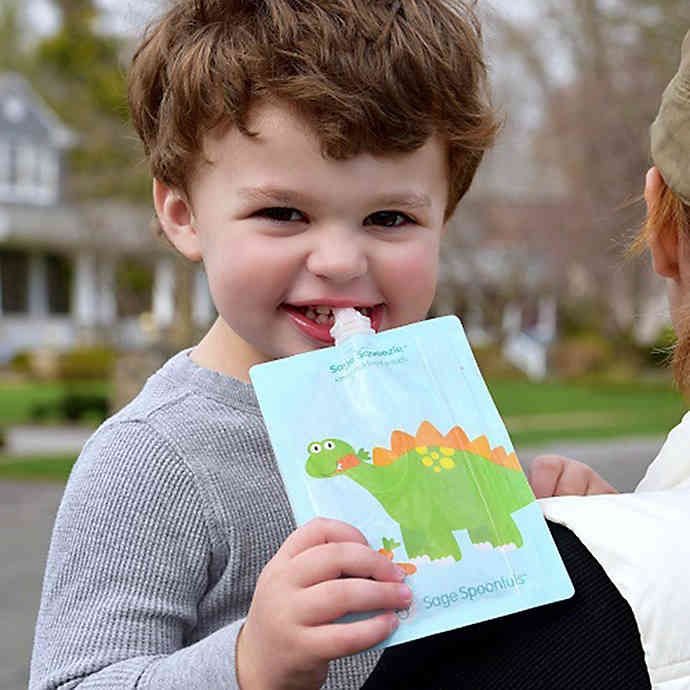 g. their roasted squash and fruit medley has only 6 grams of sugar!), and their savory meals are low in sugar as well!
g. their roasted squash and fruit medley has only 6 grams of sugar!), and their savory meals are low in sugar as well!
I used many of the pouches on this list (prioritizing the flavors listed in bold since those contain only veggies) for my kids when I needed a meal on the go. One thing to note on these pouches is that even if you use them regularly, it’s still important to incorporate a variety of finger foods so your baby becomes familiar with the different textures and flavors of non-pureed food.
I know the baby food aisle can be overwhelming at times, but I hope this post helps you find the healthiest baby food pouches with confidence! If you have any questions, don’t hesitate to leave me a comment on this post or contact me here! I respond to every single message I get! 🙂
For more information about the best products for baby, check out these posts!
- The Best Probiotics for Kids
- Best Baby Cereal Brands
- 80+ Healthy Road Trip Snacks For Kids And Toddlers
- Best Organic Baby Formula
- Healthiest Children’s Multivitamins (see my top pick here)
50 Best Baby Food Pouches [2022]
The Best Baby Food Pouches 2022
Life as a parent is busy and unpredictable. And prepping and cooking ALL the meals is a tall—read: impossible—order. (Like, we knew we were going to love our kids. We knew we’d have to take care of them. But we didn’t think about the fact that we’d have to feed them 3 meals AND SNACKS every. single. day. Right?!) Enter baby food pouches: The feeding option that packs a nutritional punch, cuts mess in half, and cuts out prep altogether.
And prepping and cooking ALL the meals is a tall—read: impossible—order. (Like, we knew we were going to love our kids. We knew we’d have to take care of them. But we didn’t think about the fact that we’d have to feed them 3 meals AND SNACKS every. single. day. Right?!) Enter baby food pouches: The feeding option that packs a nutritional punch, cuts mess in half, and cuts out prep altogether.
Whether your need another caregiver to feed your child and you want peace of mind, you’ll be on the go and need a portable snack in the car or on the plane, you just want to get something more nutrient-dense than puffs into them before their next mealtime, or, you just want to sneak a serving of veggies and some good fats into their diet, pouches have your back.
Keep reading for a complete list of the baby food pouch brands and flavors I turn to again and again as a pediatric dietitian and picky eating specialist!
The 50 Best Baby & Toddler Food Pouches On The Market Right Now
Here are my 50 fav pouch options, all in one list. If you’d like a bit more info on each one, or if you’re looking for something specific, like the best brain-boosting pouches, the most veggie-forward pouches, or the top iron-rich pouches, then keep scrolling. There are more juicy details below!
If you’d like a bit more info on each one, or if you’re looking for something specific, like the best brain-boosting pouches, the most veggie-forward pouches, or the top iron-rich pouches, then keep scrolling. There are more juicy details below!
- Serenity Kids Carrots, Spinach & Basil
- Serenity Kids Turmeric Chicken With Bone Broth
- Serenity Kids Turkey Bolognese With Bone Broth
- Serenity Kids Sweet Potato & Parsnip
- Serenity Kids Roots
- Serenity Kids Sweet Potato & Spinach
- Serenity Kids Squashes
- Serenity Kids Carrot Medley
- Serenity Kids Butternut Squash & Spinach
- Serenity Kids Wild Caught Salmon With Organic Butternut Squash & Beets
- Serenity Kids Grass Fed Beef With Organic Kale & Sweet Potatoes
- Earth’s Best Chicken Casserole
- Earth’s Best Pasta With Tomatoes & White Beans
- Earth’s Best Carrots & Broccoli
- Earth’s Best Squash & Sweet Peas
- Earth’s Best Sweet Potato & Beets
- Earth’s Best Pumpkin & Spinach
- Earth’s Best Sweet Potato, Cinnamon & Oat
- Earth’s Best Blueberry, Banana, Flax & Oat
- Earth’s Best Banana Apricot Pumpkin With Yogurt, Oat & Quinoa
- Earth’s Best Apple, Sweet Potato, Pumpkin, Blueberry
- Earth’s Best Spinach, Lentil, Brown Rice
- Happy Tot Zucchini, Apple, Peas, Quinoa & Basil
- Happy Tot Broccoli And Carrots With Olive Oil & Garlic
- Happy Tot Squash, Chickpeas & Spinach With Olive Oil & Sage
- Happy Tot Sweet Potatoes With Olive Oil & Rosemary
- Happy Tot Purple Carrot & Cauliflower With Avocado Oil & Oregano
- Happy Tot Black Beans, Beets & Bananas
- Happy Tot Sweet Potato, Mangoes & Carrots
- Happy Tot Pears, Kale & Spinach
- Happy Tot Apples & Butternut Squash Super Chia Pouch
- Happy Tot Carrots, Strawberries & Chickpeas
- Happy Tot Pears, Green Beans & Peas Super Chia Pouch
- Cerebelly Green Bean Pumpkin
- Cerebelly Sweet Potato Pinto Bean
- Cerebelly Carrot Beef Broth
- Cerebelly Pea Basil
- Cerebelly Black Bean Sweet Potato
- Cerebelly Carrot Chickpea
- Cerebelly Butternut Squash White Bean
- Cerebelly Broccoli Pear
- Cerebelly Carrot Pumpkin
- Once Upon A Farm Apple Cinnamon Overnight Oats
- Once Upon A Farm Blueberry Overnight Oats
- Once Upon A Farm Ras-Pear-Y Vanilla Smart Blend
- Once Upon A Farm Pear-Y Blueberry & Spinach Smart Blend
- Once Upon A Farm Ohmymega Veggie
- Once Upon A Farm Wild Rumpus Avocado
- Happy Baby Apples & Walnut Butter
- White Leaf Provisions Carrot, Sweet Potato & Pea
Get 15% Off Your First Serenity Kids Order
Thinking about stocking up on a few Serenity Kids flavors? Use my super-special link and apply the code MAMAKNOWS when you check out to get 15% off your first order.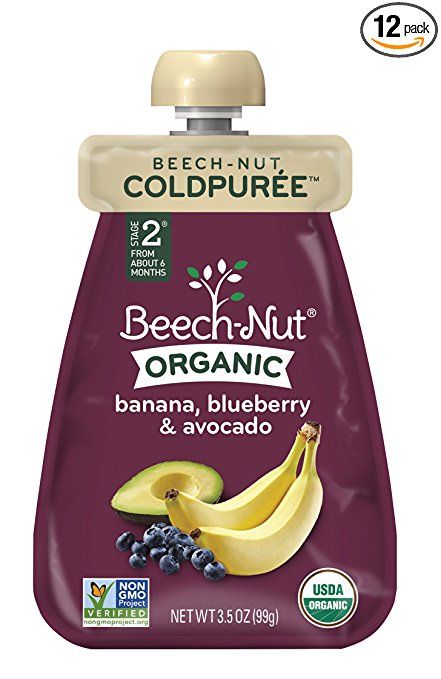
Reasons To Use & Love Baby Food Pouches
Baby food pouches have wiggled their way into a top spot on the baby food pyramid and for good reason! Instead of jars and spoons and high chairs, parents can opt for a pouch, cut the mess in half, and cut the prep out altogether when it comes to feeding their babies. No wonder they’re such a staple in so many homes. But as great as they are (and they really are!), I do suggest sticking within a few serving parameters.
How To Use Baby Food Squeeze Pouches
I generally like to suggest using pouches strategically and somewhat sparingly. As a rule of thumb, I try not to serve your child more than one a day. Simply because, ideally, we want our kids to be acquainted with all types of foods in all different forms, without creating too much of a reliance on pureed foods.
Because pouches are such an easy and comfortable food for so many little ones, pouches can perpetuate picky eating and even texture aversions if used too often. They can also stall oral motor development if used too often.
They can also stall oral motor development if used too often.
Bottom Line: Serve pouches, for sure! Just see them as one part of a bigger rotation of foods you serve. That way, you won’t go wrong.
(P.S. Wondering how to include other types of foods into baby’s days? Check out my Ultimate Guide to Baby’s First Foods from 4-6 Months Old)
Go Ahead, Mama! Live That Pouch Life.
Pouches are so incredibly practical and they’re loved by parents and little ones alike, which is why so many parents—and so many food companies—are jumping on the baby food pouch train. They’re less messy, they combine the convenience of an on-the-go snack with the nutrition of a meal. Oh, and did I mention they’re less of a mess? So whatever the reason you opt for pouches, you can feel really great about giving them to your kids. Especially when, more often than not, you opt for the super-nutritious options I’m about to tell you about.
The Best Baby Food Pouches For Nutritional Needs
Have I mentioned that I love pouches for you? Because I really do. But, not every pouch is created equal. While it’s no big deal to serve a “less nutritious” pouch here and there, if they’re something you rely on regularly, I love the options listed here, because they help you make sure you’ve covered your child’s nutritional bases without giving it much in-the-moment thought.
But, not every pouch is created equal. While it’s no big deal to serve a “less nutritious” pouch here and there, if they’re something you rely on regularly, I love the options listed here, because they help you make sure you’ve covered your child’s nutritional bases without giving it much in-the-moment thought.
Here are some of the best pouches on the market, broken down by what makes them stand out nutritionally. There are options with fruits and veggie combos for a snack packed with vitamins and minerals, some that merge a high-quality protein source with a complimentary veggie side, and some that include nutrient boosts like hemp seeds. You can’t go wrong with any of them!
And, these options will help you limit exposure to arsenic and other heavy metals in baby food. Mainly, you want to avoid/limit rice based baby foods, as those will be higher in arsenic. This is not something you need to worry over! Just make sure to vary their foods, and limit rice and rice-based products to once a day.
Related: How To Shop for Baby Food (My Top Tips!)
10 Best Flavor-Packed Baby Food Pouches
These options include a variety of diverse ingredients, spices, nutrition boosters, and/or herbs for seasoning, so by serving them, you’re exposing baby to lots of different flavors early on. This exposure can go a long way in broadening their palate. It can even help prevent picky eating down the line!
- Serenity Kids Carrots, Spinach & Basil
- Serenity Kids Turmeric Chicken With Bone Broth
- Serenity Kids Turkey Bolognese With Bone Broth
- Earth’s Best Chicken Casserole
- Earth’s Best Pasta With Tomatoes & White Beans
- Cerebelly Pea Basil
- Happy Tot Broccoli And Carrots With Olive Oil & Garlic
- Happy Tot Squash, Chickpeas & Spinach With Olive Oil & Sage
- Happy Tot Sweet Potatoes With Olive Oil & Rosemary
- Happy Tot Purple Carrot & Cauliflower With Avocado Oil & Oregano
10 Best Brain-Boosting Baby Food Pouches
These options go beyond a simple fruit and veggie puree by including between 2. 5 to 5 grams of high-quality fat in each pouch. Fat is crucial for central nervous system development in babies, which is what makes them brain boosters! These pouches are also great choices if you want to make sure your baby is hitting those fat targets.
5 to 5 grams of high-quality fat in each pouch. Fat is crucial for central nervous system development in babies, which is what makes them brain boosters! These pouches are also great choices if you want to make sure your baby is hitting those fat targets.
- Serenity Kids sweet potato and parsnip
- Serenity Kids roots
- Serenity Kids sweet potato and spinach
- Serenity Kids squashes
- Cerebelly green bean pumpkin
- Cerebelly sweet potato pinto bean
- Cerebelly carrot beef broth
- Once Upon a Farm apple cinnamon overnight oats
- Once Upon a Farm blueberry overnight oats
- Happy Baby apples and walnut butter
10 Best Iron-Rich Baby Food Pouches
Iron is a nutrient that as the parent of a baby or toddler, you do want to be paying attention to. Babies are both with iron stores which they receive from us in utero, but stores run out by about 6 months. After that, your child needs to get their iron food sources. These pouch options will provide a substantial amount of iron. Think anywhere from 15-60% of their daily needs!
Think anywhere from 15-60% of their daily needs!
Related: The Best Sources of Iron for Toddlers
- Cerebelly Black Bean Sweet Potato
- Cerebelly Carrot Chickpea
- Cerebelly Butternut Squash White Bean
- Cerebelly Broccoli Pear
- Cerebelly Carrot Pumpkin
- Serenity Kids Wild Caught Salmon With Organic Butternut Squash & Beets
- Serenity Kids Grass Fed Beef With Organic Kale & Sweet Potatoes
- Happy Tot Pears, Green Beans & Peas Super Chia Pouch
- Once Upon A Farm Ras-Pear-Y Vanilla Smart Blend
- Once Upon A Farm Pear-Y Blueberry And Spinach Smart Blend
10 Best Baby Food Veggie Pouches
Some babies don’t love their veggies. But that doesn’t mean there aren’t ways to still give them exposure to veggies while getting more nutrients into them! These veggie-packed baby food pouches combine several veggies with a fruit or other food, to make it more appealing to your toddler. This is a great way to weave a serving of veggies in here or there!
- White Leaf Provisions Carrot, Sweet Potato & Pea
- Once Upon A Farm Ohmymega Veggie
- Once Upon A Farm Wild Rumpus Avocado
- Serenity Kids Carrot Medley
- Serenity Kids Butternut Squash And Spinach
- Earth’s Best Carrots & Broccoli
- Earth’s Best Squash & Sweet Peas
- Earth’s Best Sweet Potato & Beets
- Earth’s Best Pumpkin & Spinach
- Happy Tot Zucchini, Apple, Peas, Quinoa & Basil
10 Best Value Pouches for Babies & Toddlers
These are my favorite cost-effective go-to pouches because they still check a lot of the nutrition boxes. Some of them may be simpler in composition than their more expensive counterparts, but they still contain organic produce, vitamins and minerals, and a good amount of nutrients for under $2 each.
Some of them may be simpler in composition than their more expensive counterparts, but they still contain organic produce, vitamins and minerals, and a good amount of nutrients for under $2 each.
- Earth’s Best Sweet Potato, Cinnamon & Oat
- Earth’s Best Blueberry, Banana, Flax & Oat
- Earth’s Best Banana Apricot Pumpkin With Yogurt, Oat & Quinoa
- Earth’s Best Apple, Sweet Potato, Pumpkin, Blueberry
- Earth’s Best Spinach, Lentil, Brown Rice
- Happy Tot Black Beans, Beets & Bananas
- Happy Tot Sweet Potato, Mangoes & Carrots
- Happy Tot Pears, Kale & Spinach
- Happy Tot Apples & Butternut Squash Super Chia Pouch
- Happy Tot Carrots, Strawberries & Chickpeas
More Baby Food Options
The companies who create all my favorite baby food pouches have several more offerings—all of which are great for baby depending on what you’re looking for. I trust these brands and their products both because they’re formulated without added sugar and because they use organic produce and non-GMO ingredients. Some of the one- or two-ingredient fruit pouches are less nutrient-dense than, say, the ones that include veggies, fats, and protein. But they can still be useful in your child’s diet!
Some of the one- or two-ingredient fruit pouches are less nutrient-dense than, say, the ones that include veggies, fats, and protein. But they can still be useful in your child’s diet!
Other Foods By My Favorite Brands
- Once Upon A Farm Baby Meals (6 Months+)
- Serenity Kids Grain Free Puffs (6 Months+)
- Cerebelly Smart Bars (For Ages 1+)
- Tiny Organics Meals (6 Months+)
Keep It Nutrient-Dense, But Don’t Stress
There’s no shame in the baby food pouch game, mama! Use them as much as you want to, have to, or can afford to. When possible, I do recommend opting for the pouches that are a little more nutrient-dense so that your baby or toddler is getting a mix of carbohydrates, protein, and fat, as well as a variety of vitamins and minerals. Remember that the more foods you are able to introduce into their diet, the more likely their nutritional bases are to be covered by the foods they eat. (So the less likely they are to need supplements!) Plus, it’s best for kids to become familiar with a large variety of foods, textures, mixtures, seasonings, and spices—to hopefully avoid picky eating down the line.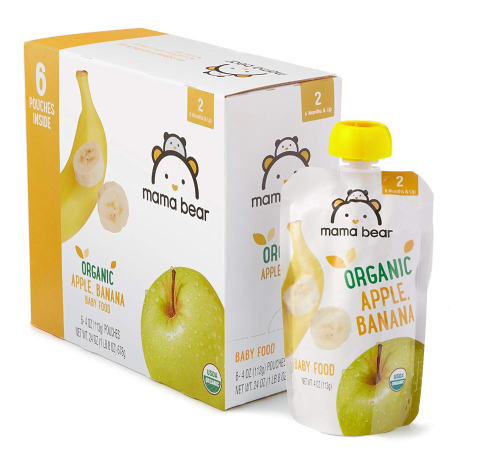 But as long as most of the pouches they have are nutritionally decent, you can rest easy knowing you’re serving a great, convenient, child-approved option!
But as long as most of the pouches they have are nutritionally decent, you can rest easy knowing you’re serving a great, convenient, child-approved option!
Adding New Foods To Baby’s Diet? Grab My Simply Solids Guide!
This research-backed guide to starting solids—something you can do alongside breastfeeding and serving purees and pouches if you choose to—eliminates doubt and helps you feed them well, right from the start. It’s usually $15, but right now it’s free!
Get The FREE Guide
Trends in baby food packaging: packaging as a toy, a means of communication with parents and an element of eco-strategy
The choice of baby food in Russian retail is huge! Manufacturers are exercising original packaging solutions to attract young parents. The packaging of baby food has its own trends - it is with the help of packaging that brands develop children, conduct a dialogue with parents, or even prepare babies for adulthood.
Coming to the store, the buyer faces a large selection of goods. Packaging helps him make a decision. Often these criteria are standard - attractiveness and informativeness. As for baby food, for parents, the main indicators are the quality and safety of the product. But the convenience of packaging becomes its additional bonus.
Packaging helps him make a decision. Often these criteria are standard - attractiveness and informativeness. As for baby food, for parents, the main indicators are the quality and safety of the product. But the convenience of packaging becomes its additional bonus.
We talk about Russian and international experience in attracting the attention of customers using the examples of several brands that produce baby food.
Packaging as a toy
The first thing to mention is the spiders. This is the most "fresh" innovation in the category of baby food, which appeared in Russia much later than in the West. The word “spiders” is still unusual even for experienced parents, and you can often hear the wording “soft packaging”. But now such containers are used in more and more categories, they are used for classic fruit purees, and for dry cereals. One of the main advantages of this package is that it is difficult for a child to get dirty or spill the contents. In addition, spiders are convenient for moms, they are light and compact, they can be taken for a walk or on the road.
All children love toys. Therefore, it is obvious to use this emotional component in the packaging of baby food. The FrutoNyanya brand followed this path when it offered toy covers to its consumers.
“Our pouch-packed fruit purees come with a special certified toy lid, thanks to which the child can learn colors and count, collect various figures, which in the end can positively influence fine motor skills. For our youngest consumers, we produce fruit-shaped pouch packs to introduce the baby to the first fruits,” says Anna Ivanova Marketing Director of PROGRESS JSC, manufacturer of the FrutoNyanya brand .
Such entertainment also brings up perseverance and independence, stimulates positive emotions. Frutolids are hexagonal with 2 and 3 notches on the sides. And thanks to these grooves, they interlock with each other quite tightly. They can be assembled not only in a plane, but also to build multi-level structures, developing the child's imagination.
Packaging as a tool for dialogue
The next trend in packaging is to communicate with parents. Now manufacturers are striving for the most open dialogue with the consumer. Full information about the composition is placed on the label inscription. In this composition, the consumer understands all the ingredients, there are no abbreviations.
Now manufacturers are striving for the most open dialogue with the consumer. Full information about the composition is placed on the label inscription. In this composition, the consumer understands all the ingredients, there are no abbreviations.
Producers of baby food talk about the production, methods of growing vegetables and fruits, and their suppliers. This trend is also reflected in the packaging – the transparency of the packaging is becoming an important way of communication. For example, transparent labels, fully or partially transparent packaging.
Packaging as an element of eco-responsibility
Another important component of packaging is its tactile qualities, dullness, craft solutions. Consumers are increasingly interested in features that make packaging easier to recycle and reuse. For example, completely biodegradable materials or materials that can be used as fertilizer, or even edible materials. But this trend is still in its infancy in Russia, in the future we will see more completed projects.
An example here is the young British brand Little Tummy, which is based on the principle of sustainability. Even today, the plastics and papers they use are 100% recyclable and recyclable.
Going even further, Swedish brand Alex & Phil are committed to reducing the use of conventional plastic and gradually moving towards bioplastics and renewable resources such as sugar cane. Starting in 2019, they have switched to aluminum-free packaging, which is 80% bioplastic, and their caps are made entirely of this material.
See also: Retooling a business in times of crisis: 5 steps for a manufacturer
Packaging as Smart Entertainment very popular with consumers. Thanks to packaging, manufacturers can create games and competitions in augmented reality mode, quickly and easily redirect the consumer to the site.
For example, last year, in partnership with the popular Shazam app, the FrutoNyanya brand released a limited series of liquid cereals with a special QR code that allows parents and kids not only to eat healthy, but also listen to fairy tales at night using augmented reality.
Packaging as a guide to the world of "adult" food
The above trends relate to the Russian market. In the West, there are ways to attract buyers. In Europe and America, brands have long been offering their young customers an "adult" range of dishes. Of course, it meets all the standards of baby food, but in terms of taste it is close to the dishes of an adult diet. This trend can also be seen in the packaging of baby food. For example, the French baby food brand Bledina offers products packaged in an airtight plastic plate. Parents warm up the dishes and, without shifting from this plate, feed the child. The idea of this package is that serving a dish for little ones is no different from serving for adults.
In addition, in Europe, manufacturers of children's yoghurts and puddings only offer large packages. There are no such micro-jars as we have on store shelves. Only a large amount is offered in order for the child to get used to adult standards from childhood.
* * *
It has long been clear that when choosing a product, the buyer pays attention to the additional benefits that packaging can bring. Moreover, conceptual packaging useful for a child can increase the purchase intention. And when you work with children's goods, you need to ensure that both an adult buyer and a small consumer of the product are satisfied. Thus, every year manufacturers try to come up with more and more new approaches.
Ksenia Petrova
for New Retail
Curd for children: the best and worst in 2022
Cottage cheese was studied according to 88 quality and safety indicators (of which 5 are microbiological indicators, 42 are antibiotics). The product was examined for the content of preservatives (benzoic, sorbic and propionic acids) and artificial colors. Studied organoleptic indicators and credibility of the label.
How is children's cottage cheese different from ordinary cottage cheese?
Larisa Abdullaeva
head of the standardization service of the Dairy Union of Russia, executive secretary of the technical committee for milk standards TK 470/MTK 532, expert, Ph.D.
- The technology for preparing cottage cheese for children and “adults” is the same - whey is removed from milk fermented with lactic acid bacteria by various methods: pressing or self-pressing (when whey flows out of the fermented mass itself, almost like at home in gauze), separation or ultrafiltration (this is special equipment, using which the serum is removed). Starter cultures of lactic acid bacteria for the production of children's and ordinary cottage cheese are exactly the same.
But they produce children's cottage cheese, like any other food product for children, in separate workshops or on a separate dedicated line. This is important, since special requirements for sanitary and hygienic production conditions are imposed on the manufacture of baby food.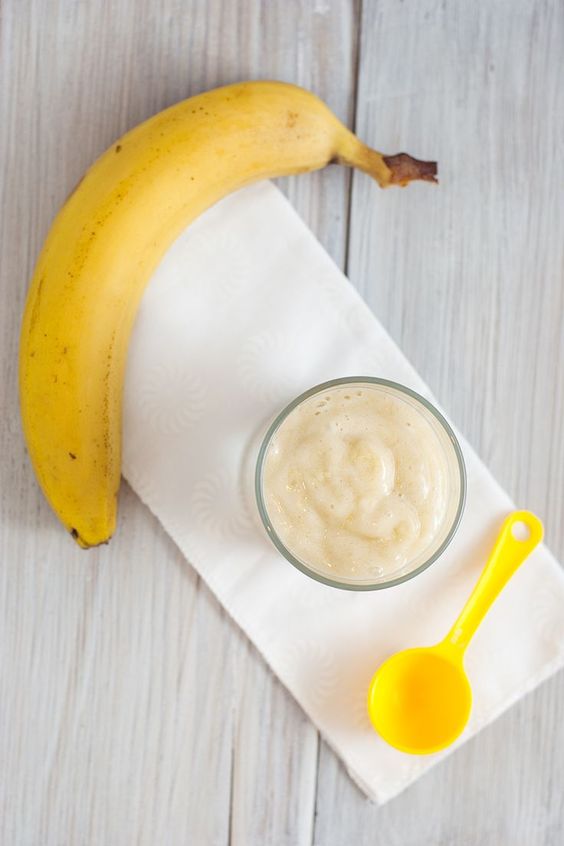
For children under three years old, cottage cheese is produced by ultrafiltration, since with this method it turns out to be a delicate, smearing consistency, and it is more convenient and healthy for a child to eat just such cottage cheese. This is perhaps the very first difference from the product for adults, which has a crumbly, grainy texture. Cottage cheese for preschoolers and schoolchildren can also be of a crumbly consistency, but now the granular cottage cheese that is so popular now is, as a rule, a product for adults, it does not apply to baby food.
Of course, only the highest grade milk is used for children's cottage cheese, the microbiology and safety of which are somewhat different from the indicators of milk for the production of all dairy products: the standards in it are more stringent both in terms of microbiology and safety indicators.
Children's cottage cheese is less acidic. The maximum acidity index in it is 150 °T (Turner degrees), while in the usual one it is 240 °T.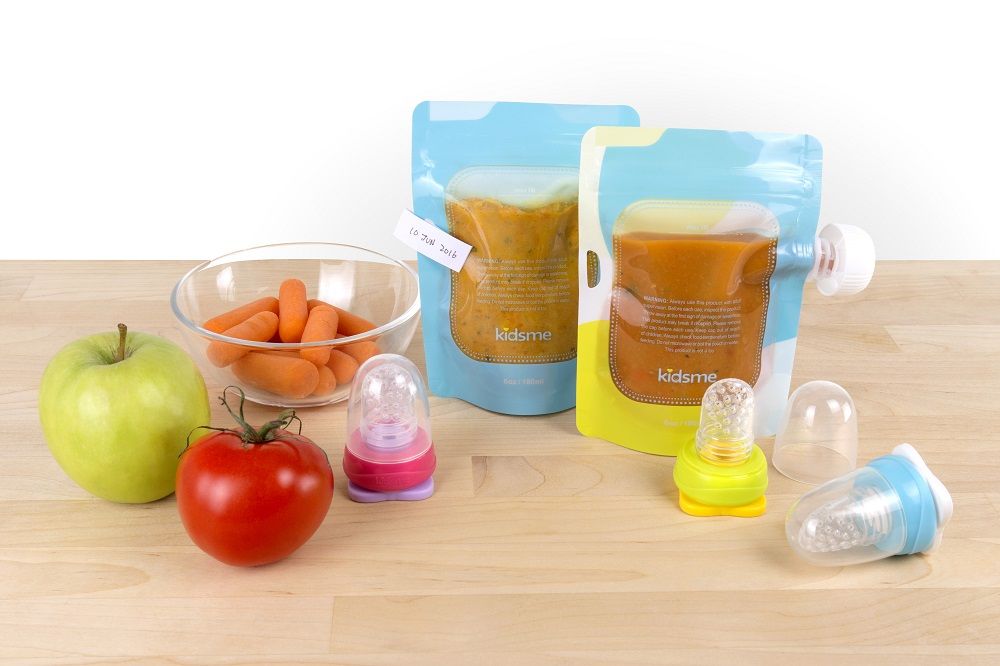 Such low acidity is important for the child's body, it is not yet able to absorb excess acids. It is impossible to use cottage cheese for adults in the baby’s diet, both because of its high acidity and because of the grainy crumbly structure - the child can simply choke on large particles of cottage cheese.
Such low acidity is important for the child's body, it is not yet able to absorb excess acids. It is impossible to use cottage cheese for adults in the baby’s diet, both because of its high acidity and because of the grainy crumbly structure - the child can simply choke on large particles of cottage cheese.
Children's cottage cheese, like regular cottage cheese, contains live lactic acid bacteria, which are very beneficial for the body. In children's cottage cheese produced by ultrafiltration, the exact amount of these bacteria is not standardized (it varies due to the peculiarities of ultrafiltration technology), but they must be there, otherwise the manufacturer could not call this product cottage cheese.
Children's cottage cheese contains a strictly regulated amount of fat and protein, and this is established by sanitary standards with the participation of pediatricians. There is no “fat-free” cottage cheese for children, since the balance of all nutrients is always important for the baby’s body. In addition, some vitamins that are so important for a child, such as D, are fat-soluble and cannot be absorbed without milk fat. The standard fat range for baby cottage cheese is 4 to 9.%, while in the usual mass fraction of fat according to GOST 31453 varies widely - from 0 to 23%. The standard protein content in children's cottage cheese is 8-9%, in ordinary protein it contains much more - from 14 to 18% (the highest protein is fat-free cottage cheese).
In addition, some vitamins that are so important for a child, such as D, are fat-soluble and cannot be absorbed without milk fat. The standard fat range for baby cottage cheese is 4 to 9.%, while in the usual mass fraction of fat according to GOST 31453 varies widely - from 0 to 23%. The standard protein content in children's cottage cheese is 8-9%, in ordinary protein it contains much more - from 14 to 18% (the highest protein is fat-free cottage cheese).
In children's cottage cheese, the amount of individual trace elements, primarily calcium, is normalized, but there are no such norms for ordinary cottage cheese. A children's product is also often produced enriched with various vitamins and microelements, which the manufacturer must indicate on the label.
Is baby cottage cheese safe?
According to the results of the study, in all the cottage cheese we studied, antibiotics and pesticides were not found in dangerous amounts for health.
No aflatoxins detected Aflatoxins are waste products of fungi of the genus Aspergillus. These deadly mycotoxins are heat-resistant and insensitive to organic solvents.
Currently, the aflatoxin family includes four main representatives - aflatoxins B1, B2, G1, G2 and more than 10 compounds that are derivatives or metabolites of the main group - M1, M2, B2a, G2a, GM1, P1, Q1 and others.
The most dangerous and widespread aflatoxin is aflatoxin B1. Aflatoxin B1 is a hepatotropic poison and primarily affects the liver. When aflatoxin B1 is ingested with feed to dairy cows, its metabolite, aflatoxin M1, may be present in milk.
Aflatoxin M1 is found not only in whole milk, but also in reconstituted milk, in cottage cheese, cheeses, and yogurt. Dairy products contaminated with aflatoxin M 1 are environmentally dangerous for humans. Aflatoxins cause cancer of the liver and lungs, pulmonary edema, weight loss, feed conversion, and reduces the protective functions of the body. When high doses of aflatoxins enter the body, death occurs within a few days due to irreversible liver damage.
When high doses of aflatoxins enter the body, death occurs within a few days due to irreversible liver damage.
Cottage cheese does not contain preservatives (including salts of benzoic, sorbic and propionic acids), as well as synthetic dyes.
Replaced animal fat with vegetable or not?
The composition of cottage cheese does not contain soy, phytosterols, the mass fraction of fatty acids is normal. This suggests that manufacturers did not try to replace animal fat with vegetable fat.
Did you add thickeners?
Starch, as well as carrageenan, which can be used as thickeners by unscrupulous manufacturers (according to the standard, these are additives prohibited in cottage cheese) were not found.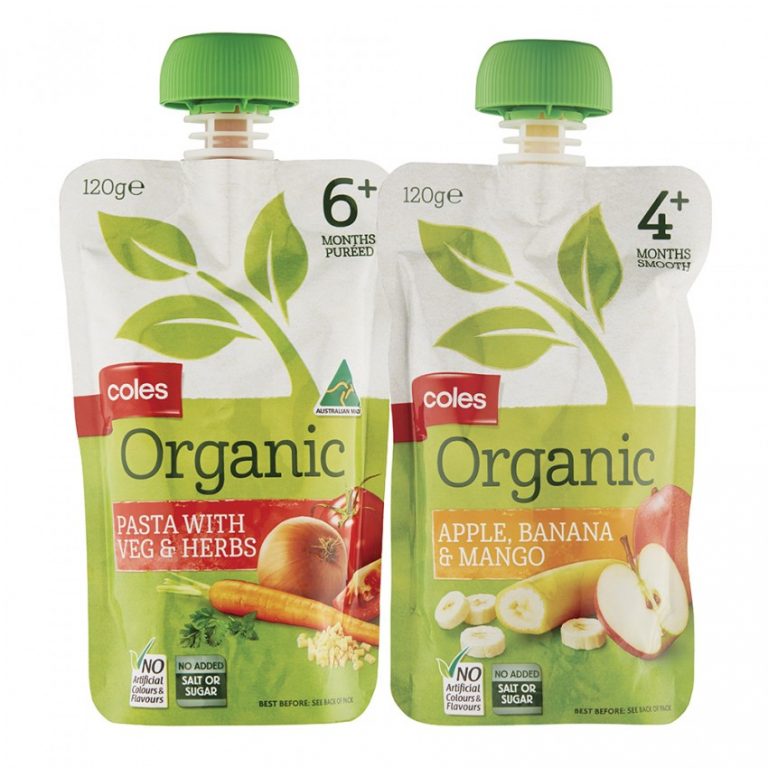
What kind of milk was used to make cottage cheese?
Mass fraction of dry skimmed milk residue (SOMO ), according to the requirements of the technical regulation, should be at least 13.5%. A low SOMO may either indicate that low-quality milk was used to produce cottage cheese, or that part of the product was replaced with some additives (for example, water, starch or other thickeners).
The results of our study indicate that all manufacturers used high-quality milk for the preparation of cottage cheese. In addition, it has passed the pasteurization process, as evidenced by the phosphatase index.
For reference
Phosphatase determines the degree of pasteurization of milk. Pasteurized milk should not contain this enzyme.
Is there excess moisture in the curd?
The mass fraction of moisture in cottage cheese for children under one year old should not exceed 82%. In our study, all cottage cheese met this requirement. The mass fraction of moisture varied from 76.98 to 79.28%.
In our study, all cottage cheese met this requirement. The mass fraction of moisture varied from 76.98 to 79.28%.
The quality of cottage cheese is also affected by such an indicator as titratable acidity. The technical regulations set the norm - no more than 150 °T (Turner degrees). If the acidity is higher, then this may indicate insufficient cooling of the product in production, as well as a violation of the storage temperature regimes throughout the refrigeration chain.
How much calcium is in cottage cheese?
Speaking of calcium, it should be noted that the technical regulation establishes a requirement - at least 85 mg / 100 g, and GOST regulates the upper limit - no more than 150 mg / 100 g.
All studied cottage cheese contains a sufficient amount of calcium, which varies from 92.65 to 105.59 mg/100 g.
Are estrogen hormones present in cottage cheese?
Experts from Roskachestvo examined cottage cheese for the content of estrogen group hormones, including ethinyl estradiol. This study was done because there is a consumer myth that milk is a source of estrogens (female hormones) because hormones can be used to increase milk supply. Why is the presence of hormones feared in cottage cheese? Because cottage cheese is a concentrated product, therefore, according to parents who buy children's cottage cheese, it may contain more estrogen group hormones and this is not good for the child.
This study was done because there is a consumer myth that milk is a source of estrogens (female hormones) because hormones can be used to increase milk supply. Why is the presence of hormones feared in cottage cheese? Because cottage cheese is a concentrated product, therefore, according to parents who buy children's cottage cheese, it may contain more estrogen group hormones and this is not good for the child.
The results of the study showed that the mass concentration of estrogen group hormones, including ethinylestradiol, is below the permissible amount, that is, parents' fears are in vain - Roskachestvo experts dispelled this myth.
What are the benefits of cottage cheese for children?
Tatiana Butskaya
First Deputy Chairman of the State Duma Committee on Family, Women and Children
– Cottage cheese is a rich source of calcium and an excellent prevention of osteoporosis in the future. It is good if the cottage cheese is enriched with vitamin D, which helps the absorption of calcium. But if the child eats such cottage cheese every day, and the mother gives the baby vitamin D separately, then in this case the dosage of the vitamin should be reduced, after consulting with the pediatrician.
But if the child eats such cottage cheese every day, and the mother gives the baby vitamin D separately, then in this case the dosage of the vitamin should be reduced, after consulting with the pediatrician.
It is necessary to introduce cottage cheese into complementary foods of a child no earlier than 8-9 months. Of course, before this, a pediatrician's consultation will not hurt, since the decision on the exact timing of the introduction of cottage cheese into the child's diet is best taken together with the doctor who leads your baby. Early exposure to this product is not recommended because most children under eight months of age do not have enough enzymes to digest proteins, which can lead to allergies, kidney problems and anemia.
The daily norm for a one-year-old baby should not exceed 50 g, and you need to start acquaintance with cottage cheese with a teaspoon - this will be enough to understand whether the child tolerates the new product well. If you see that everything is going well, introduce cottage cheese into complementary foods. But you should not overload the children's body with cottage cheese, because the load on the kidneys increases.
But you should not overload the children's body with cottage cheese, because the load on the kidneys increases.
Taste, texture, color
GOST states that the consistency of cottage cheese for baby food should be soft, spreadable or crumbly (if the cottage cheese was prepared by pressing and (or) self-pressing). Cottage cheese may or may not contain particles of milk protein. The taste and smell should be pure sour-milk, and if the cottage cheese is with fruit filling, then with the taste and smell due to the added fruit components. The color should be white or with a creamy tint, uniform throughout the mass, and if the cottage cheese is with fruit filling, then with the characteristic color of the added fruit components, without foreign tastes and odors.
The results of the study allow us to state that all the studied cottage cheese complies with the established standards.
What to look for when buying baby cottage cheese?
“Look at the shelf where the store has cottage cheese for baby food,” advises Larisa Abdullaeva . – It should be “cold” and, of course, clean. It is advisable to check the storage temperature on a thermometer or sensor that the shelf should be equipped with. Almost all dairy products are perishable and must be sold at a temperature not exceeding +6 °C. It is absolutely impossible to buy children's cottage cheese from the "warm" shelf.
– It should be “cold” and, of course, clean. It is advisable to check the storage temperature on a thermometer or sensor that the shelf should be equipped with. Almost all dairy products are perishable and must be sold at a temperature not exceeding +6 °C. It is absolutely impossible to buy children's cottage cheese from the "warm" shelf.
Pay attention to the packaging. It must be airtight. Cottage cheese for young children is packaged in a package from 50 to 100 g, no more, since it must be eaten immediately in an opened package (opened cottage cheese is not subject to storage).
On the packaging must be an indication of the age for which the product is made for children.
The composition, in addition to proteins, fats and carbohydrates, contains information about the content of trace elements, such as calcium. Sometimes manufacturers fortify cottage cheese with vitamins, such as vitamin D.
Pay attention to the date of manufacture and expiration date. Cottage cheese for baby food, like any fermented milk product, cannot be stored for a long time. As a rule, the shelf life of baby cottage cheese in industrial sealed packaging does not exceed 14 days. If the cottage cheese was stored correctly, in the conditions indicated by the manufacturer on the package, then its quality will be the same throughout the entire shelf life. During this time, beneficial lactic acid microorganisms and added biologically active components, such as vitamins, are preserved in the product. But still, if there is an opportunity to choose a fresher product, take it. Cottage cheese is a “capricious” product, undesirable microorganisms and molds can develop in it even with minimal storage temperature violations. And of course, do not store an open glass in the refrigerator: children's cottage cheese cannot be stored in opened packages.
Cottage cheese for baby food, like any fermented milk product, cannot be stored for a long time. As a rule, the shelf life of baby cottage cheese in industrial sealed packaging does not exceed 14 days. If the cottage cheese was stored correctly, in the conditions indicated by the manufacturer on the package, then its quality will be the same throughout the entire shelf life. During this time, beneficial lactic acid microorganisms and added biologically active components, such as vitamins, are preserved in the product. But still, if there is an opportunity to choose a fresher product, take it. Cottage cheese is a “capricious” product, undesirable microorganisms and molds can develop in it even with minimal storage temperature violations. And of course, do not store an open glass in the refrigerator: children's cottage cheese cannot be stored in opened packages.
conclusions
-
All tested cottage cheese is safe. Experts did not reveal the presence of pathogenic microorganisms.
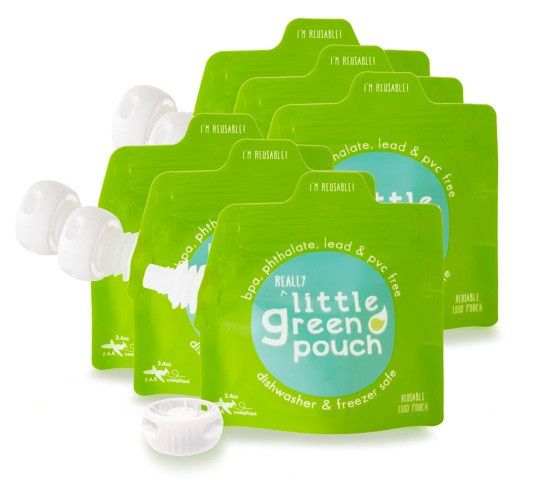 Didn't find antibiotics. No aflatoxins were found.
Didn't find antibiotics. No aflatoxins were found. -
Cottage cheese for baby food does not contain preservatives and synthetic dyes. Made from high quality pasteurized milk.
-
Manufacturers do not replace animal fats with vegetable fats, do not use thickeners (starch and carrageenan) in the production.
-
Curd does not contain estrogen hormones, including ethinyl estradiol.
-
The product contains enough calcium. Appearance, taste, smell, color correspond to the standards established by GOST.
-
The results of the study allow us to state that the cottage cheese of all studied brands is safe, high-quality and healthy. These are trademarks: Agusha, Am-Am, Auchan, VkusVill, Mama Lama, Myasnov, Our Masha, Rastishka, Tyoma, FrutoNyanya.
Artem Belov
Director General of the National Union of Milk Producers (Soyuzmoloko)
- The quality and safety of children's cottage cheese, as well as all products labeled "for children", are under the most stringent control of supervisory authorities.











